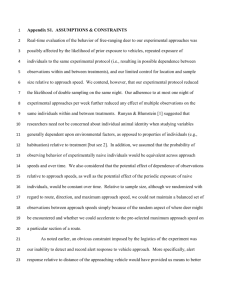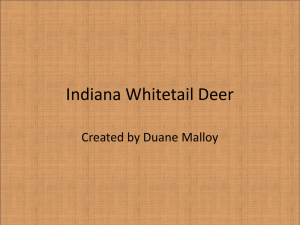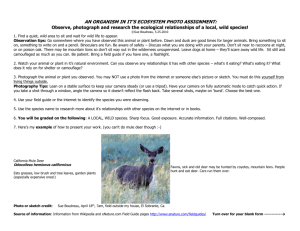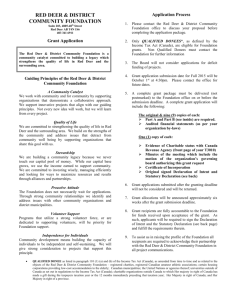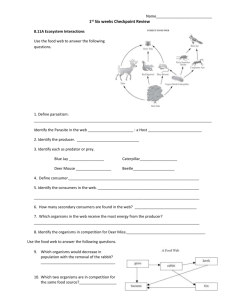Wilson Thapa Study on chemical factors affecting the health of red
advertisement
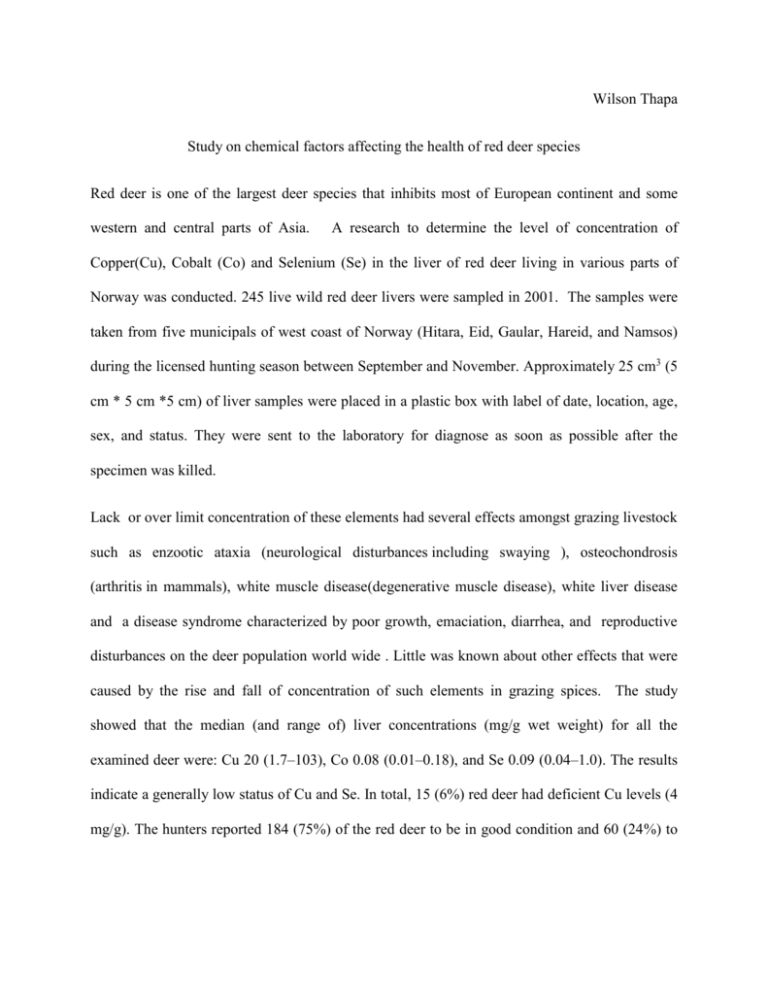
Wilson Thapa Study on chemical factors affecting the health of red deer species Red deer is one of the largest deer species that inhibits most of European continent and some western and central parts of Asia. A research to determine the level of concentration of Copper(Cu), Cobalt (Co) and Selenium (Se) in the liver of red deer living in various parts of Norway was conducted. 245 live wild red deer livers were sampled in 2001. The samples were taken from five municipals of west coast of Norway (Hitara, Eid, Gaular, Hareid, and Namsos) during the licensed hunting season between September and November. Approximately 25 cm3 (5 cm * 5 cm *5 cm) of liver samples were placed in a plastic box with label of date, location, age, sex, and status. They were sent to the laboratory for diagnose as soon as possible after the specimen was killed. Lack or over limit concentration of these elements had several effects amongst grazing livestock such as enzootic ataxia (neurological disturbances including swaying ), osteochondrosis (arthritis in mammals), white muscle disease(degenerative muscle disease), white liver disease and a disease syndrome characterized by poor growth, emaciation, diarrhea, and reproductive disturbances on the deer population world wide . Little was known about other effects that were caused by the rise and fall of concentration of such elements in grazing spices. The study showed that the median (and range of) liver concentrations (mg/g wet weight) for all the examined deer were: Cu 20 (1.7–103), Co 0.08 (0.01–0.18), and Se 0.09 (0.04–1.0). The results indicate a generally low status of Cu and Se. In total, 15 (6%) red deer had deficient Cu levels (4 mg/g). The hunters reported 184 (75%) of the red deer to be in good condition and 60 (24%) to be in moderate condition. Only one was reported to be in poor condition, an adult male from Hareid. The elements were analyzed according to standard procedures. Cu and Co was analyzed as described by Bernhoft et al. (2002) while Se analysis followed an accredited method. The materials used were accredited as well. The Cu and Co samples (1 g each) were digested by a mixture of nitric acid and hydrogen peroxide in a closed system under pressure with microwaves. They were then diluted and analyzed with spectroscopy. The Se samples ( 1 g) were digested by mixture of nitric acid and perchloric acid on a programmed heating block. It was then analyzed using spectroscopy. As the sample data did not have normality, non-parametric methods like Kruskal-Wallis method was used for comparison of element concentration in different geographical regions and age groups. It was found that significant age-related variation in Cu status was visible amongst the red deer population of the research. The adult age group had the highest median Cu level, both in the total and at all locations, with some exception of variances in few locations. The difference between young calves yearlings and adults was quite significant. An age-related increase in liver Cu levels has also been documented for wild red deer in Canada. Apparently the Cu levels in liver concentrations were not significantly different by sex. The result showed that liver concentration differed significantly between different locations. Largest geographical variation was found in Cu. Most of the red deer had adequate Cu level among the study group. Only few had marginal or deficient Cu level, which showed that the concentration level in general red deer population was good. The study also gave an insight that the normal liver Se level in Norwegian red deer is low and could possibly result a health problem. Red deer farming is not a large industry yet in Norway till this date but however, the number of farms is rising, with current recognized number being at 50 farms. It is important to consider the fact that when capturing wild deer for farming, it is essential to provide nutritional supplementation as needed .In most of the red deer farms submitting liver samples for the control of trace element status to the National Veterinary Institute, low concentrations of both Se an Cu have been found showing the deficiencies in the animals. It is important to maintain proper health of the wild population of the deer and also highlighting changes taking place after capturing from wild during farming. From the farmers’ point of view, it is important to have the insight when capturing wild deer for farming, they are aware of the possible need for nutritional supplementation. From all of the above stated factors from research done, we can conclude that in order to maintain a healthy population of red deer in the vicinity of Norway, crucial steps are to be enacted providing supplements in farms as well as sustainable way to ensure that the wild deer have enough of the required nutrition.

